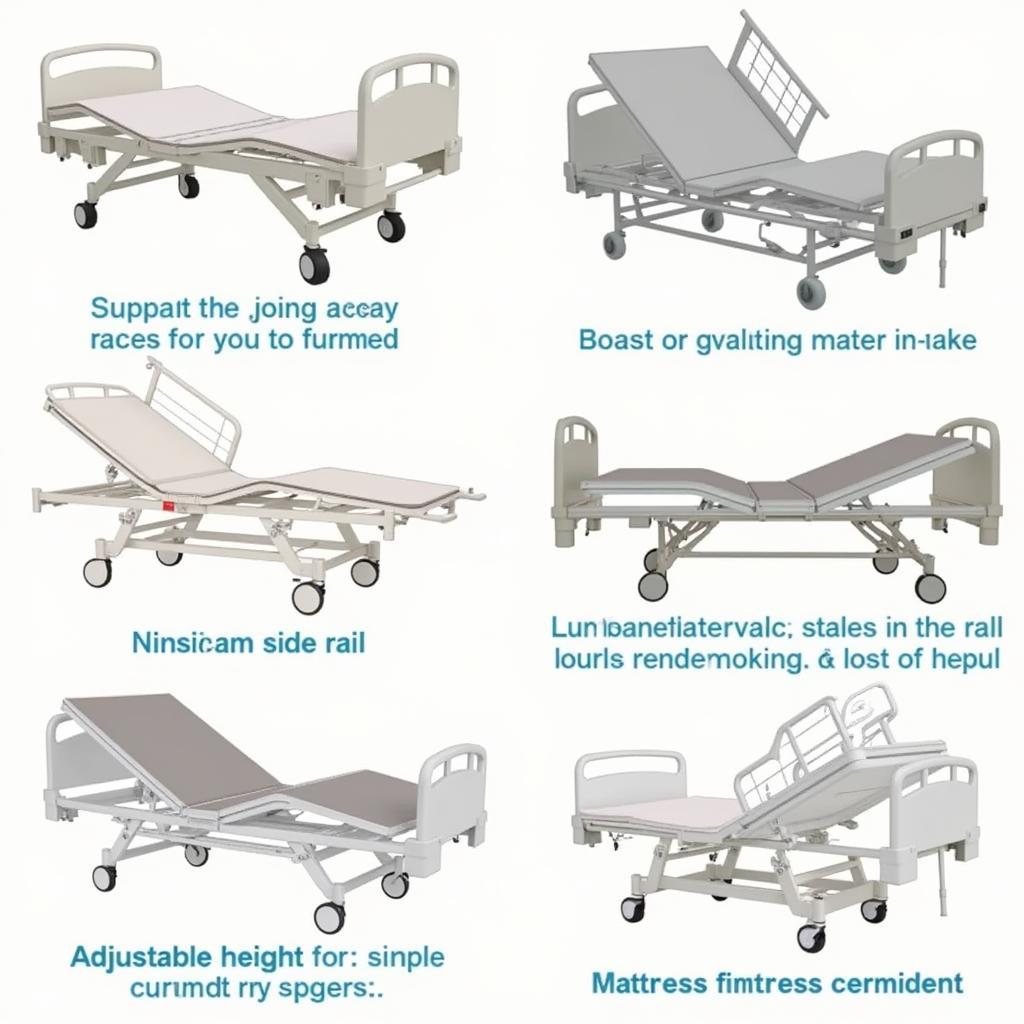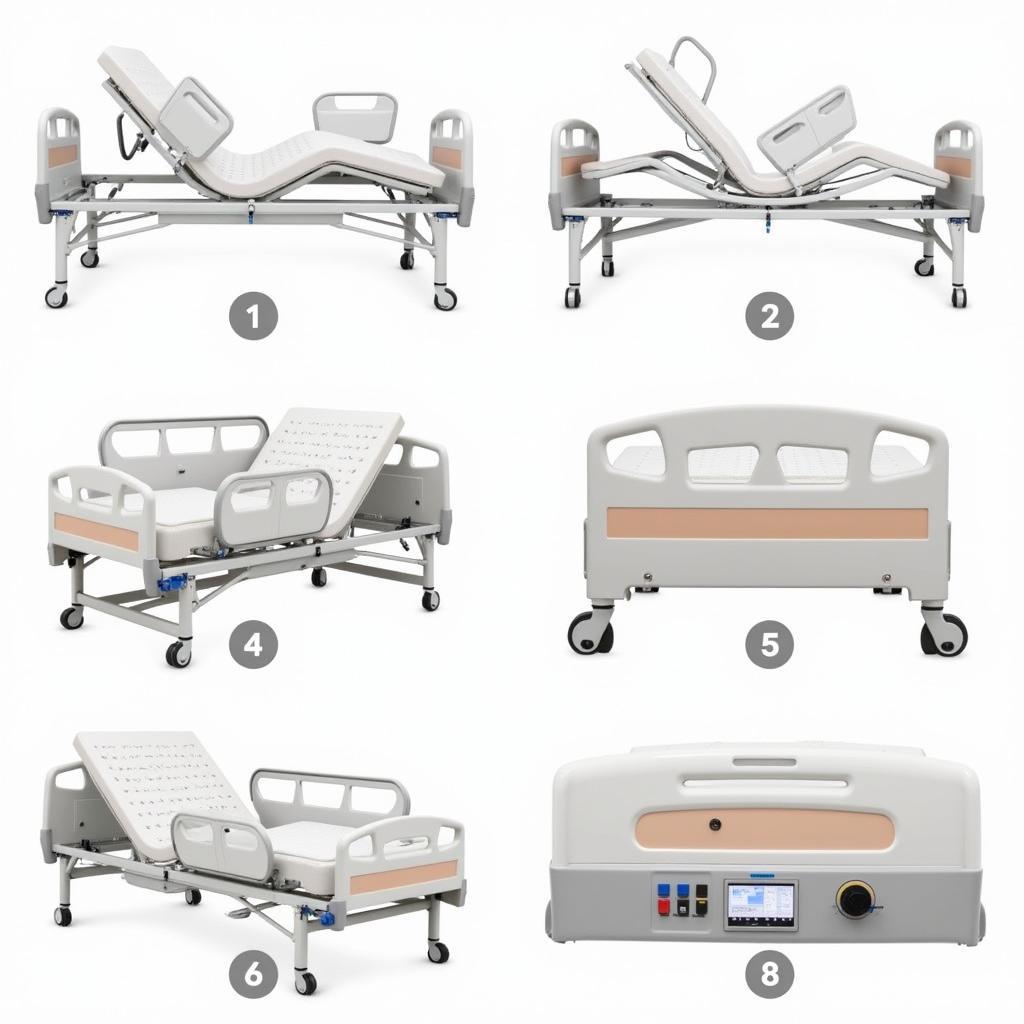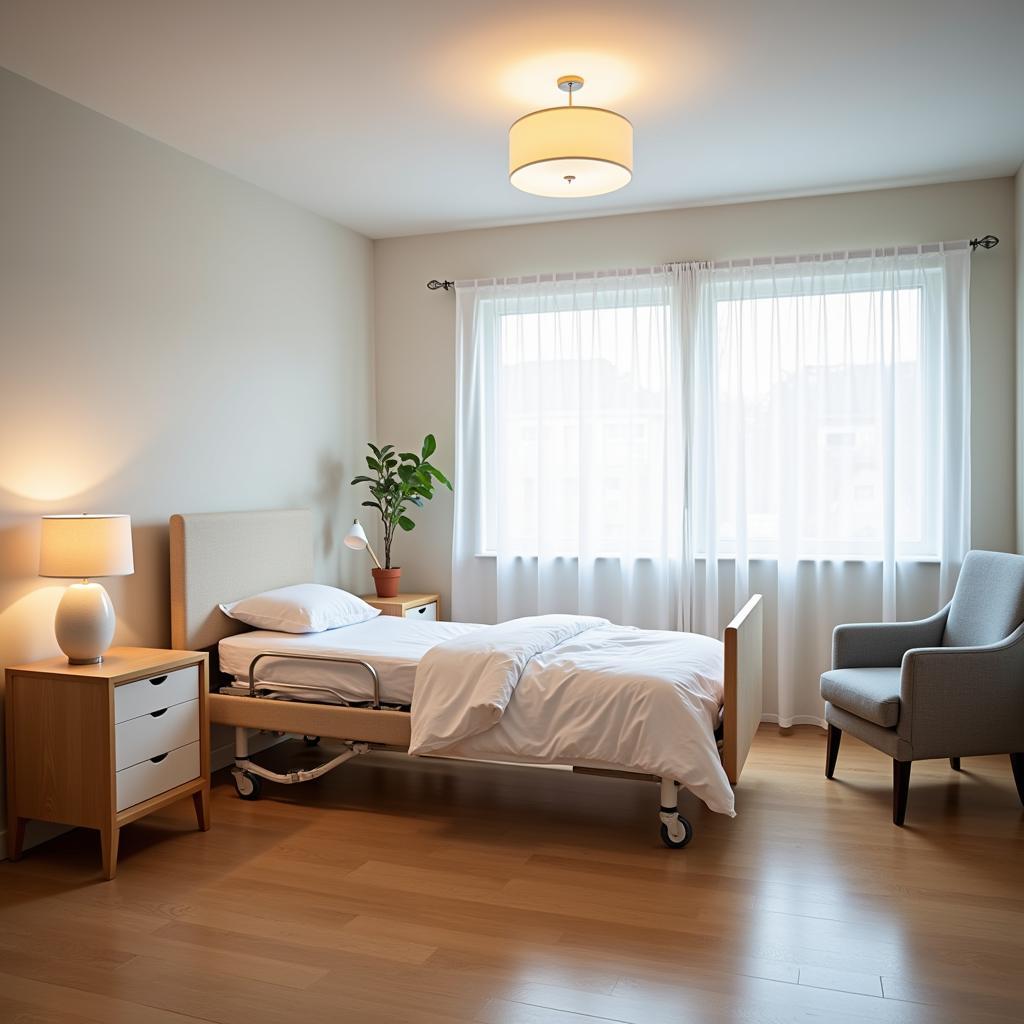Navigating the world of at-home hospital beds can feel overwhelming, especially when you’re focused on a loved one’s recovery and comfort. Choosing the right bed is a crucial decision, ensuring not only their well-being but also ease of care for you. This comprehensive guide will equip you with the knowledge to make an informed decision about at-home hospital beds.
 Selecting a home hospital bed
Selecting a home hospital bed
Understanding the Different Types of At-Home Hospital Beds
Before delving into specific features, it’s vital to understand the various types of at-home hospital beds available. Each caters to specific needs and comfort levels.
Manual Hospital Beds for Home Use
As the name suggests, these beds require manual adjustments for height and positioning. While they offer a budget-friendly option, they might not be suitable for individuals needing frequent adjustments.
Semi-Electric Hospital Beds
Offering a balance between affordability and convenience, semi-electric beds allow for electronic adjustments to the head and foot sections, while height adjustments remain manual. This type is ideal for individuals who need help sitting up or adjusting leg elevation.
Fully Electric Hospital Beds
Providing the utmost convenience, fully electric hospital beds for home use come equipped with electronic controls for all adjustments, including height, head elevation, and foot elevation. They are particularly beneficial for individuals with limited mobility or caregivers seeking ease of use.
 Essential Features of Home Hospital Beds
Essential Features of Home Hospital Beds
Factors to Consider When Choosing At-Home Hospital Beds
Beyond the basic types, several key factors come into play when selecting the ideal at-home hospital bed. Considering these aspects ensures the chosen bed aligns perfectly with the user’s needs and your home environment.
Size and Weight Capacity
Begin by accurately measuring the available space in your home where the bed will be placed. Consider the user’s height and weight to ensure a comfortable fit and choose a bed with an appropriate weight capacity for safety.
Mattress Selection
The mattress plays a crucial role in comfort and pressure relief, especially for individuals spending extended periods in bed. Opting for a specialized hospital bed mattress designed to prevent pressure sores and promote proper spinal alignment is highly recommended.
Features for Safety and Convenience
Features like side rails are crucial for preventing falls, while adjustable heights can significantly ease caregiver tasks. Look for beds with locking wheels for added safety and consider additional features like built-in bedpan holders or IV poles based on specific needs.
 Setting Up a Home Hospital Bed
Setting Up a Home Hospital Bed
Renting vs. Buying At-Home Hospital Beds
The decision to rent or buy often depends on the anticipated duration of use and budget considerations.
Hospital rental beds
Renting offers a practical solution for short-term needs or when unsure about the long-term requirement for a hospital bed. It’s also more budget-friendly upfront, making it an attractive option for temporary situations.
Purchasing At-Home Hospital Beds
If the need for a hospital bed extends beyond a few months or becomes a long-term necessity, purchasing might be a more economically sound decision. It also allows for greater customization in terms of features and mattress selection.
Expert Insight
“Choosing the right at-home hospital bed is about finding the perfect balance between functionality, comfort, and ease of use for both the patient and the caregiver,” says Jennifer Smith, a registered nurse with over 15 years of experience in home healthcare. “Don’t hesitate to ask questions and explore different options to ensure the best possible fit.”
Making the Right Choice for Your Needs
Ultimately, selecting the right at-home hospital bed requires careful consideration of individual needs, budget constraints, and available space. By meticulously evaluating each factor and understanding the range of options available, you can create a comfortable and supportive environment conducive to healing and well-being.
Expert Insight
“Remember, a hospital bed is more than just a piece of furniture, it’s an investment in your loved one’s recovery and well-being,” adds Smith. “Take your time, do your research, and don’t be afraid to ask for professional guidance.”
FAQs about At-Home Hospital Beds
What is the average cost of renting a hospital bed?
Rental costs vary depending on location and bed type, but generally range from $100 to $300 per month.
Are at-home hospital beds covered by insurance?
Coverage for at-home hospital beds varies greatly depending on your specific insurance plan and medical necessity.
Can I adjust the height of a manual hospital bed?
Manual beds typically require manual adjustments using cranks, which can be physically demanding.
How often should I clean a hospital bed mattress?
Regular cleaning is crucial for hygiene. It’s recommended to wipe down the mattress with a mild disinfectant at least once a week and change bed linens regularly.
What is the weight limit on most hospital beds?
Weight capacities vary, but most standard hospital beds can accommodate up to 500 pounds.
Are there different sizes of hospital beds available?
Yes, hospital beds come in various sizes, including Twin, Full, and Bariatric, to accommodate different body types and needs.
Where can I find hospital beds for homes?
You can find hospital beds for purchase or rent hospital beds for home use from medical supply stores, online retailers, and some pharmacies.
For further information about at-home hospital beds or to discuss your specific needs, please contact us at:
Phone: 02437655121
Email: irccsanjose@gmail.com
Or visit us at: Số 298 Đ. Cầu Diễn, Minh Khai, Bắc Từ Liêm, Hà Nội, Việt Nam.
Our dedicated customer care team is available 24/7 to assist you.
 using WordPress and
using WordPress and